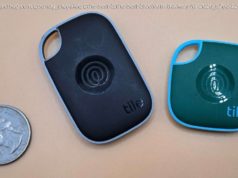Your guide to the latest and best dash cams of 2017. Check out our reviews and buyer’s guide on the top dash cams for this year.
Dash cams record while you’re driving so you have video evidence if anything happens. Dash cam footage is now accepted by some insurers to settle who was at fault in an accident and it’s also admissible in court. Here’s what to look out for so you can spend your money wisely.
Some dash cams can also double as an action camera. Halfords charges £30 for dash cam fitting, but it’s very easy to do it yourself.
Prices range from around £20 to £200, so there’s a model affordable for everyone. However, those cheapest models tend to have poor-quality lenses, and record low-resolution video which is unlikely to be good enough to allow you to read number plates and signs.
Just watch some of the UK dash cam compilation clips on YouTube to get an idea of how picture quality varies.
Sometimes paying more is a good idea, especially if it means you can make out the registration plate of the car that crashed into you and drove off.
Also some insurance companies offer discounts if you have a dash cam. For example, Adrian Flux offers a 15 percent discount if you have one of the cameras listed on its website. AXA and Swiftcover also offer discounts. New insurer Sure Thing! offers the biggest discount at 20 percent.
Since some insurers have a limited list of cameras, it’s important to get one of those. However, if you change insurers regularly, it isn’t worth paying more for a camera on one insurer’s list. In general, Nextbase cameras are the most widely supported.
Most cameras record at 1920×1080 (the same as your a HD TV) but some offer higher resolutions, such as 2560×1440. Those sold as « 4K » models simply upscale video from a lower resolution, so be suspicious. We’ve not yet seen a proper 4K dash cam.
More resolution is always better, as it usually means more detail. And details can be crucial.
Resolution isn’t everything, though. A camera’s field of view affects how large objects appear. A really wide-angle lens (anything over around 140 degrees) will mean that cars appear quite small in the video and you will only see the numbers and letters on a registration when you’re very close to another car.
The benefit of a wide-angle lens is that the camera captures more of the scene in front, but with the trade-off that everything is smaller.
Storage isn’t usually an issue because all dash cams will record on a loop. This means they record for a couple of minutes, then automatically start a new file without a break. Once the memory card is full, it begins overwriting the oldest file.
Many dash cams are limited to 32GB because they don’t support SDXC, so check before buying a larger card. With most cameras, a 32GB card will be enough for about 4-5 hours of footage.
Here are the best microSD cards to buy.
Most models come with a small battery that allows it to finish saving a file when you turn off the ignition. It can also run for a few minutes so you can take photos as more evidence if you have a collision.
Here are other things to look for:
GPS allows the camera to record your location as well as your speed. The GPS data syncs up with the video clips when played back in software bundled with the dash cam so you can watch the footage and see your location on a map.
Some GPS receivers are external and have a long wire so they can be mounted out of sight. Others are part of the suction mount, while yet others are inside the camera itself.
The G-sensor detects impacts and – usually – locks the recorded video to prevent it being deleted. All dedicated dash cams have one, but action cameras generally don’t.
This may use the g-sensor, but is specifically for recording moments when your car is parked. It doesn’t guarantee you will see what happened, of course, as the camera points in only one direction.
Also, most manufacturers don’t recommend leaving the camera turned on when parked as it can drain the battery. Plus, many cars cut power to the accessory socket when you turn off the ignition, so you may need to get the camera hard-wired by a professional to use this feature.
Hardwire kits can be installed to give the camera power all the time, or in cars whose 12V socket remains on when you turn off the ignition. The latter is handy as it means the camera can’t drain the car’s battery if you accidentally leave it plugged in.
Cameras with Wi-Fi usually allow you to install an app and view recordings from your phone or tablet. This can be useful, especially if it lets you download recordings. However, transferring video over Wi-Fi can be painfully slow, and the videos trapped within the app and not easily sharable.
Often, it’s much easier to remove the microSD card (or even the dash cam from the car) and transfer the files to a laptop or PC. Either way, you’ll see much more detail than if you review footage on the small, low-resolution screens on the dash cams themselves.
Dual-lens dash cams are out there, but are in the minority. Some have a second camera built-in to the main dash cam, which faces rearwards and records the passengers. This can be useful in taxis, but if you want to record the view out of your rear window, it’s best to buy a second dash cam and record footage separately.
Some cameras have extra features which warn you when you veer out of your lane, or you get too close to the car in front. We’ve found these to be generally poor and unreliable.
What’s more useful is that some GPS-equipped dash cams provide safety camera alerts and display the current speed limit.
Accessories vary between dash cams, but you can expect a fairly long power cable which is designed to be routed around your windscreen and down to your 12V socket. It’s a shame that manufacturers don’t provide a long USB cable instead, as you’d then be able to use a 12V USB adaptor with multiple USB outputs.
If you use the included cable, you won’t be able to use your 12V socket for anything else, such as charging your phone. Also check out our Tronsmart USB Rapid Car Charger review.
With the right app, your smartphone can be used as a dash cam.






